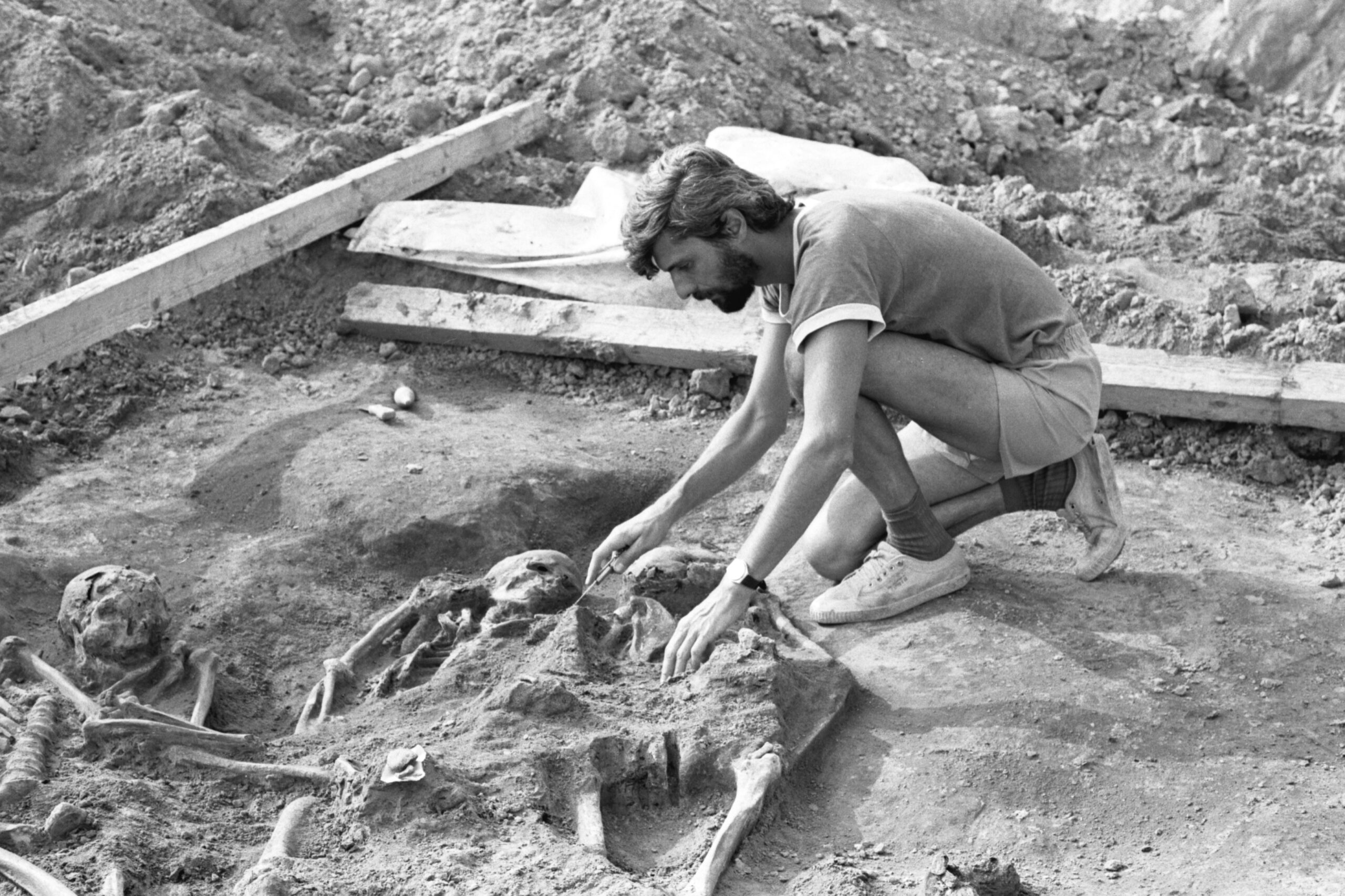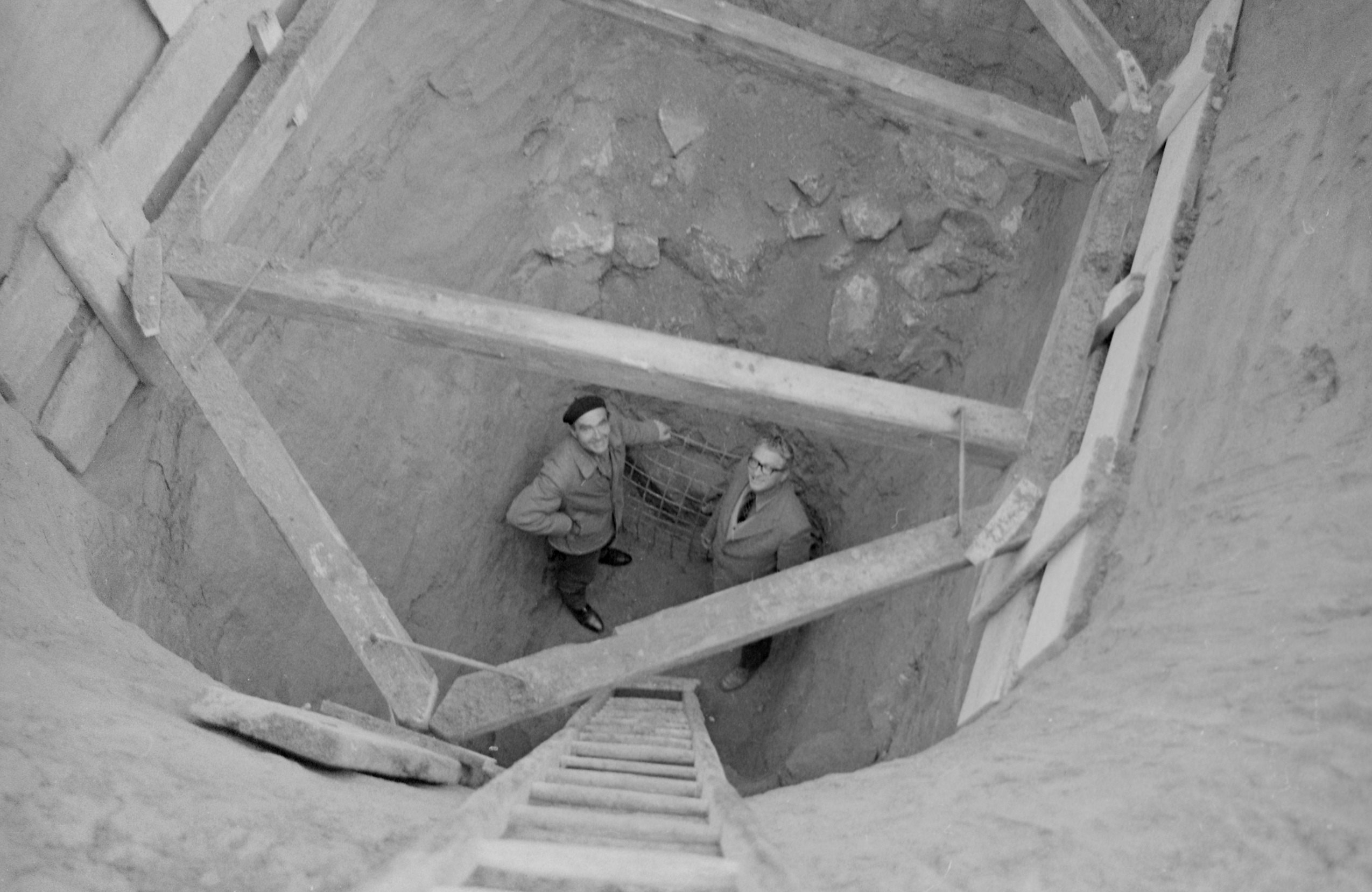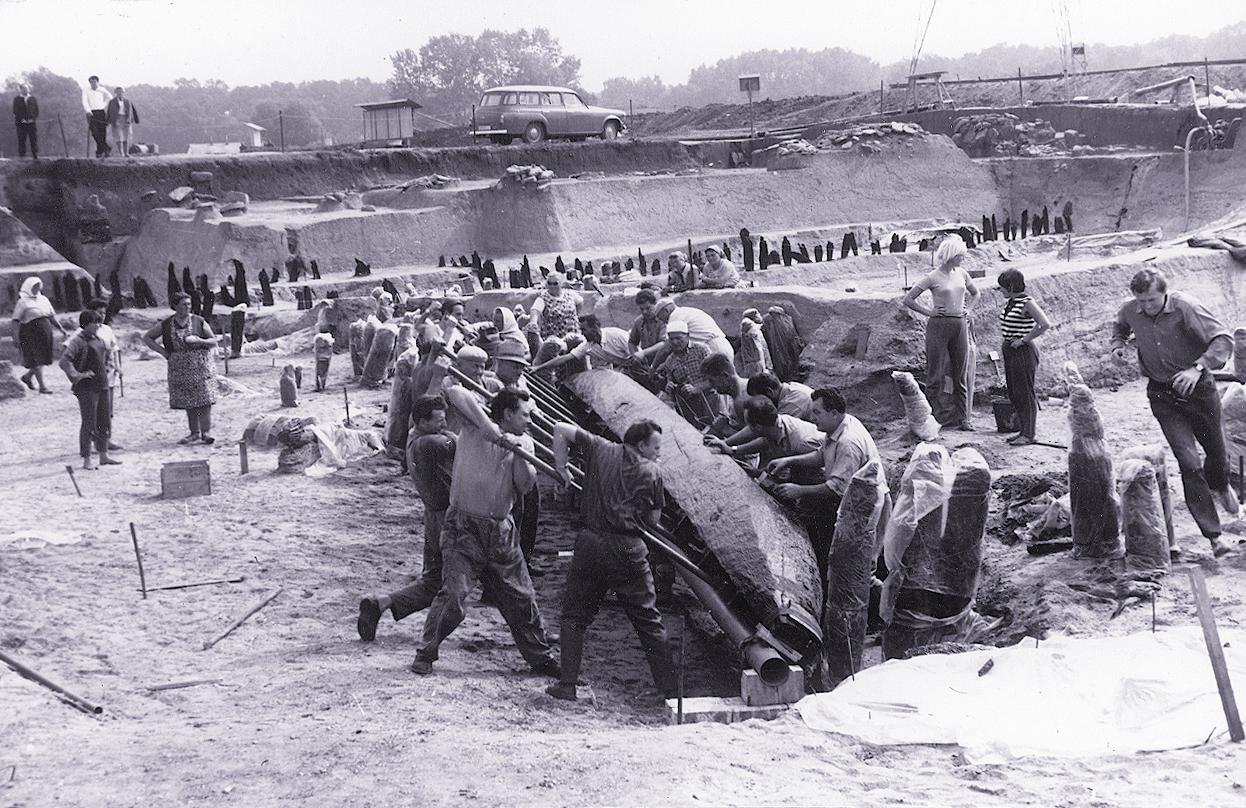From the institute’s history
The prerequisite for the establishment of a central archaeological scientific institution in Moravia was set by the foundation of the State Institute of Archaeology in Prague in 1919. Its spiritual father and founder, Lubor Niederle, endowed his institute with a timeless concept of a research institution combining basic research in the modern sense with archaeological site record keeping. The territory of Moravia and Silesia was first administered through the state conservator I. L. Červinka and from 1942 as the Brno branch of the Prague-based institute. The workplace remained a branch until 1970 when it became the independent Institute of Archaeology of the Academy of Sciences in Brno. Between 1990 and 1995, the institute underwent a fundamental structural and conceptual transformation, which defines today’s ARÚB as a basic research institution in the sphere of the archaeological study of the earliest history of humankind. Another important agenda, the protection of archaeological monuments, was established within the institute’s activity over the course of time.
The beginnings of the Institute of Archaeology of the Czech Academy of Sciences in Brno date back to 1942 when it was founded as a branch of the State Institute of Archaeology in Prague. Although German archaeologist Karl Hucke served as its first director, in practice, the branch was already managed by Josef Poulík, under whose leadership the institution developed over the following decades. A major milestone came in 1953 when the Brno-based branch of the existing State Institute of Archaeology was incorporated into the structure of the newly established Czechoslovak Academy of Sciences (CSAS), the successor of the original Czech Academy of Sciences and Arts, which had been operating since 1891. At first, it was a branch of the central institution, the Prague-based Institute of Archaeology of the Czechoslovak Academy of Sciences before it was established as an independent scientific institute in 1970 under the name of the Institute of Archaeology of the Czechoslovak Academy of Sciences in Brno.
A major turning point came in the early 1990s when the institute underwent a considerable reorganisation under new management. Following the transfer of the rescue excavation agenda, predominantly under the state administration and the self-governing authorities and other organisational measures, the institute’s personnel was reduced to less than half. The institution then focused mainly on basic research. This was done within the new concept of the Academy of Sciences of the Czech Republic, transformed from the original CSAS on 31 December 1992. A new scientific concept of the Institute of Archaeology of the Czech Academy of Sciences in Brno was prepared and put into practice in 1995, which the workplace follows to this day. This corresponds to the organisational structure of the institute, which is divided into three science-research centres focused on the research of the Palaeolithic and palaeoanthropology (1), the Roman and Migration Periods (2) and the Slavic period including the Middle Ages (3).

History uncovered: Triple grave from Dolní Věstonice
A unique find of a burial of three individuals from the Gravettian period in Dolní Věstonice in 1986.
A fundamental landmark in the scientific-organisational sphere was the change of the institute’s status from a contributory organisation to a public research institution in 2007. Within the context of Act No. 341/2005 Coll., the change brought about new legal, economic and organisational possibilities for the development of the Institute of Archaeology of the Czech Academy of Sciences, Brno, appropriate for a scientific institution in the 21st century.
After Josef Poulík (director from 1945–1990), the institute was headed by Jaroslav Tejral (1990–1998) and Pavel Kouřil (1998–2017); Lumír Poláček has been the director since 2017. After decades of operating out of leased premises scattered over Brno, the institute was granted “asylum” in 1994 in the building of the Institute of Scientific Instruments of the Czech Academy of Sciences in Královopolská Street in Brno. It was not until 2015 that it could move to its own, newly renovated building in Čechyňská Street, where it resides to this day. The Opava branch office, founded in 1955, temporarily abandoned in 1993 and restored in 2003 as the institute’s branch for Northern Moravia and Silesia, also acquired its own building in 2020. Other onsite workplaces established in connection with the institute’s extensive fieldwork were, starting with the late 1940s, gradually transformed into present-day research bases for ARÚB in Dolní Věstonice, Mikulčice and Dolní Dunajovice.
History uncovered: Lombard grave
In 1974, the deepest archaeologically examined grave in the Czech Republic was excavated at Lombard Cemetery in Šakvice. It reached a depth of seven metres.

Since its establishment, the institute has been decisively involved in the fieldwork of the most important sites, especially from the Old Stone Age and the Early Middle Ages. Unique discoveries from Old Stone Age mammoth hunter settlements under the Pavlov Hills in southern Moravia (Dolní Věstonice, Pavlov) became world-famous in the 1950s. The real breakthrough in the history of archaeology of the Early Middle Ages in the Czech lands and the whole of Central Europe came in 1954, when Josef Poulík discovered the Mikulčice stronghold and when the institute commenced systematic research of this leading Great Moravian centre, which continues to this day. The third most important site systematically investigated by the institute is the Roman military fort at Hradisko near Mušov.
Other extensive excavations have also yielded substantial scientific knowledge. These include, for example, the New Stone Age settlement in Mohelnice, Bronze Age settlements and cemeteries in Lovčičky, Moravičany and Oblekovice, the Celtic Oppidum in Staré Hradisko near Prostějov and the Slavic strongholds of Chotěbuz-Podobora, Staré Zámky near Líšeň, Vysoká Zahrada near Dolní Věstonice and Zelená Hora near Vyškov. Among the institute’s activities concerning the High and Late Middle Ages, the research of two 13th–15th-century castles, Rokštejn near Brtnice and Lelekovice near Brno, has brought wide acclaim.
The existing knowledge of the earliest history of Moravia was considerably expanded by rescue excavations conducted by the institute mainly in the 1980s and 1990s, and to a limited extent later. These include a whole series of rescue projects during the construction of the Nové Mlýny reservoirs in southern Moravia, the excavations accompanying the construction of Moravia’s motorway network and the boom of archaeology in the historical centres of towns and cities. Archaeological projects implemented due to the construction of museum and research infrastructures at sites long examined by the institute – the Archaeopark Pavlov, the Mikulčice-Trapíkov research base and the ARÚB Visitors’ Centre in Mušov – can be described as a “new generation” of rescue excavations.

History uncovered: Wooden boat from Mikulčice
Mikulčice in 1967: the challenging excavation of a dugout wooden boat that had survived in the wet environment of a vanished river branch of the Morava for eleven centuries.
